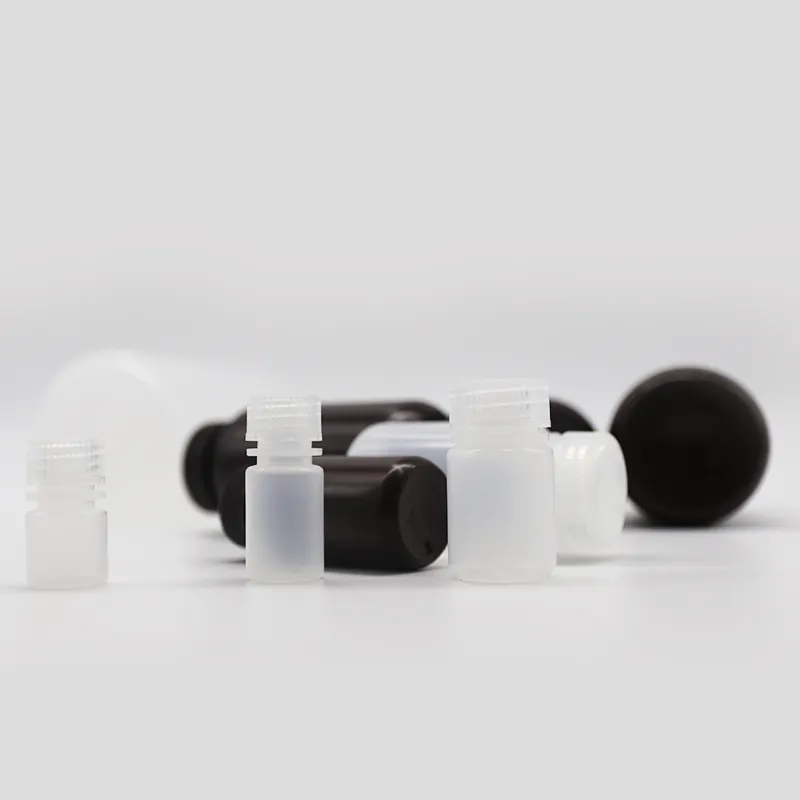Centrifuge Bottles Applications in Laboratories and Industrial Settings for Effective Sample Separation
The Uses of Centrifuge Bottles An Overview
Centrifuge bottles, also known as centrifuge tubes or centrifuge vials, are essential laboratory tools widely used in various scientific fields, including biochemistry, molecular biology, and clinical laboratories. These bottles are specifically designed to withstand the high gravitational forces generated during centrifugation, allowing for the separation of mixtures based on density differences. This article explores the uses, types, and advantages of centrifuge bottles in scientific research and clinical applications.
Separation of Biological Samples
One of the primary uses of centrifuge bottles is in the separation of biological samples. In molecular biology, for instance, researchers often use centrifuge bottles to isolate DNA, RNA, and proteins. By spinning samples at high speeds, centrifuges can separate cellular components, allowing scientists to extract specific materials for further analysis. For instance, centrifugation can separate cellular debris from plasmid DNA, making it purer for downstream applications such as PCR or cloning.
Blood Sample Processing
In clinical laboratories, centrifuge bottles play a crucial role in blood sample processing. When blood is collected into tubes, centrifugation is necessary to separate different components, such as plasma, serum, and blood cells. This separation is vital for various tests, including biochemical assays, serology, and hematology. Centrifuge bottles designed for blood sample processing are often made of materials that can withstand multiple spins and are compatible with different anticoagulants.
Research in Environmental Science
Centrifuge bottles are also utilized in environmental science for the analysis of soil and water samples. Researchers use centrifugation to separate sediments from water samples, allowing them to analyze pollutants, sediments, and microorganisms. This is particularly important in studies assessing water quality and environmental contamination. By isolating specific components in samples, scientists can better understand the effects of pollutants on ecosystems.
Pharmaceutical Applications
centrifuge bottle uses

In the pharmaceutical industry, centrifuge bottles are instrumental in the development and production of vaccines and biologics. They are employed in the purification processes, helping to separate active pharmaceutical ingredients (APIs) from excipients and contaminants. Additionally, during the formulation of vaccines, centrifuge bottles allow for the efficient separation of viral particles from culture media, ensuring that the final product is both safe and effective for use.
Types of Centrifuge Bottles
Centrifuge bottles come in various types, each designed for specific applications. Common types include conical centrifuge tubes, which have a tapered bottom allowing for efficient sedimentation; flat-bottomed tubes for general laboratory use; and specialized bottles that come with specific closures and sealing mechanisms for biohazardous materials. It’s essential to select the appropriate type based on the desired application and sample type to ensure optimal performance.
Advantages of Using Centrifuge Bottles
The use of centrifuge bottles offers multiple advantages. Their durability ensures they can withstand repeated centrifugation cycles without cracking or leaking. Most are made from materials such as polycarbonate or polypropylene, which are chemically resistant, making them suitable for a wide range of applications. Additionally, many centrifuge bottles are designed to be disposable or autoclavable, reducing contamination risk and ensuring sterile conditions when necessary.
Moreover, the transparent nature of many centrifuge bottles allows for easy visualization of sample separation, which can aid in monitoring processes during centrifugation. This visual feedback is valuable for researchers when determining the effectiveness of separation techniques.
Conclusion
In summary, centrifuge bottles are indispensable tools in modern scientific research and clinical practice. Their versatility in separating biological, chemical, and environmental samples, along with the variety of types available, makes them a fundamental component of laboratory work. As science continues to advance, the design and application of centrifuge bottles will likely evolve, further enhancing their utility in various fields. Understanding their proper usage can significantly improve research outcomes, making them crucial for anyone involved in laboratory work.
-
Aesthetic Makeup Spray Bottles | Fine Mist Empty RefillableNewsAug.19,2025
-
White Plastic Veterinary Vaccine Vials | Lab Liquid BottlesNewsAug.18,2025
-
Plastic Medicine Liquid Bottle: Secure Flip Top Drug VialsNewsAug.17,2025
-
Durable 250ml Blue Plastic Vaccine Vial for Lab & Vet UseNewsAug.16,2025
-
Sterile Virus Sample Tubes: Secure & Reliable Specimen CollectionNewsAug.15,2025
-
White 250ml Plastic Vaccine Vial for Lab & Vet MedicineNewsAug.14,2025
























